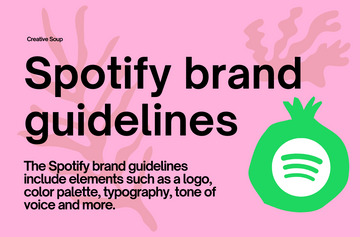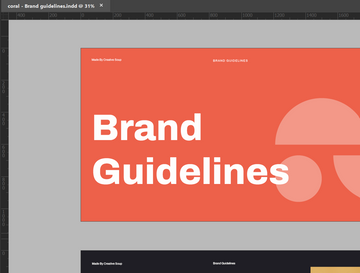Introduction
A strong brand identity is more than just a logo or a catchy tagline; it's a comprehensive representation of a company's values, mission, and unique personality. Crafting an effective brand identity involves a strategic blend of visual elements and messaging that together create a memorable impression in the minds of consumers. This article will delve into the various components that constitute a robust brand identity and how they work together to establish a cohesive brand image.
Understanding Brand Identity
Definition
Brand identity is the collection of all elements that a company creates to portray the right image to its consumer. It's how a brand wants to be perceived in the market.
Importance
A strong brand identity is essential as it helps in distinguishing a company from its competitors, fosters customer loyalty, and builds a solid reputation in the market.
Differentiation
Effective brand identity differentiates a company from its competitors by creating a unique image that resonates with the target audience.
Logo Design

Elements of a Great Logo
A great logo is simple, memorable, timeless, versatile, and appropriate. It should be easily recognizable and effectively communicate the brand's essence.
Types of Logos
There are several types of logos, including wordmarks, lettermarks, pictorial marks, abstract marks, mascots, combination marks, and emblems.
Logo Design Tips
When designing a logo, it's important to keep it simple, ensure scalability, choose appropriate colors, and make sure it aligns with the overall brand identity.
Color Palette

Psychology of Colors
Colors evoke emotions and can significantly impact consumer perception and behavior. Understanding the psychology of colors helps in choosing the right palette for your brand.
Choosing Brand Colors
Select colors that reflect your brand's personality and values. Consider the emotional impact of each color and how they work together to create a cohesive look.
Consistency in Color Usage
Consistent use of brand colors across all marketing materials helps in building brand recognition and reinforces the brand's identity.
Typography
Importance of Typography
Typography plays a crucial role in brand identity by conveying the brand's tone and style. The choice of fonts can affect readability and the overall impression of the brand.
Font Selection
Choose fonts that complement your brand's personality. Consider using a combination of typefaces for versatility while maintaining a cohesive look.
Hierarchy in Typography
Establish a clear hierarchy in typography to guide the reader's attention and make information easier to digest. Use different font sizes, weights, and styles to create contrast.
Brand Voice
Defining Brand Voice
Brand voice is the distinct personality that a brand takes on in its communications. It's how the brand speaks to its audience and expresses its values.
Consistency in Messaging
Maintaining a consistent brand voice across all channels helps in building a strong, recognizable identity. It ensures that all communications align with the brand's personality.
Tone and Style
The tone and style of your brand voice should reflect the brand's personality and resonate with the target audience. It can range from formal and professional to casual and friendly.
Tagline and Slogan
Crafting a Memorable Tagline
A tagline is a short, catchy phrase that encapsulates the essence of the brand. It should be memorable, unique, and convey the brand's core message.
Differences Between Tagline and Slogan
While taglines are more permanent and represent the brand as a whole, slogans are often used for specific campaigns and can change over time.
Imagery and Graphics
Role of Imagery
Imagery helps in creating a visual connection with the audience. It should be consistent with the brand's identity and evoke the desired emotions.
Creating Visual Consistency
Use a consistent style of imagery across all platforms to maintain a cohesive brand image. This includes photographs, illustrations, and graphic elements.
Graphic Elements
Incorporate graphic elements such as icons, patterns, and textures that align with the brand's visual identity. These elements enhance the overall design and make it more recognizable.
Brand Story
Importance of Storytelling
A compelling brand story humanizes the brand and creates an emotional connection with the audience. It communicates the brand's mission, values, and journey.
Crafting a Brand Narrative
Create a narrative that is authentic and resonates with the target audience. Highlight key moments in the brand's history and the impact it has made.
Communicating Values
Clearly communicate the brand's values through storytelling. This helps in building trust and loyalty among consumers who share the same values.
Packaging Design
Impact on Consumer Perception
Packaging design plays a crucial role in shaping consumer perception. It should be attractive, functional, and reflective of the brand's identity.
Design Elements
Consider elements such as color, typography, and materials when designing packaging. These elements should be consistent with the overall brand identity.
Consistency in Packaging
Maintain consistency in packaging design across all products to reinforce brand recognition and create a unified brand experience.
Website Design
User Experience
A well-designed website enhances user experience and keeps visitors engaged. It should be easy to navigate, visually appealing, and provide valuable information.
Visual Elements
Incorporate visual elements such as images, videos, and graphics that align with the brand's identity. These elements should enhance the overall design and user experience.
Mobile Responsiveness
Ensure that the website is mobile-responsive and provides a seamless experience across all devices. This is crucial in today's digital age where many users access websites via mobile devices.
Marketing Collateral
Types of Collateral
Marketing collateral includes brochures, business cards, flyers, and other materials used to promote the brand. Each piece should reflect the brand's identity.
Design Consistency
Ensure consistency in design across all marketing collateral. This includes using the same colors, fonts, and graphic elements.
Importance of Quality Materials
Invest in high-quality materials for marketing collateral. This reflects positively on the brand and enhances its perceived value.
Social Media Presence
Visual Consistency
Maintain visual consistency across all social media platforms. Use the same profile pictures, cover images, and color schemes to reinforce brand identity.
Content Strategy
Develop a content strategy that aligns with the brand's voice and values. Post regularly and engage with your audience to build a strong social media presence.
Engaging with Audience
Interact with your audience through comments, messages, and social media posts. This helps in building a community and fostering brand loyalty.
Brand Guidelines
Creating a Brand Style Guide
A brand style guide outlines the visual and messaging elements of a brand. It ensures consistency and provides guidelines for creating branded materials.
Elements to Include
Include guidelines for logo usage, color palette, typography, imagery, and tone of voice. This ensures that all materials are on-brand.
Enforcing Guidelines
Enforce the brand guidelines to maintain consistency. Regularly review and update the guidelines as needed.
Employee Advocacy
Importance of Internal Branding
Internal branding ensures that employees understand and embrace the brand's values. This helps in creating a cohesive brand experience.
Engaging Employees
Engage employees through training, workshops, and regular communication. Encourage them to be brand ambassadors and share the




